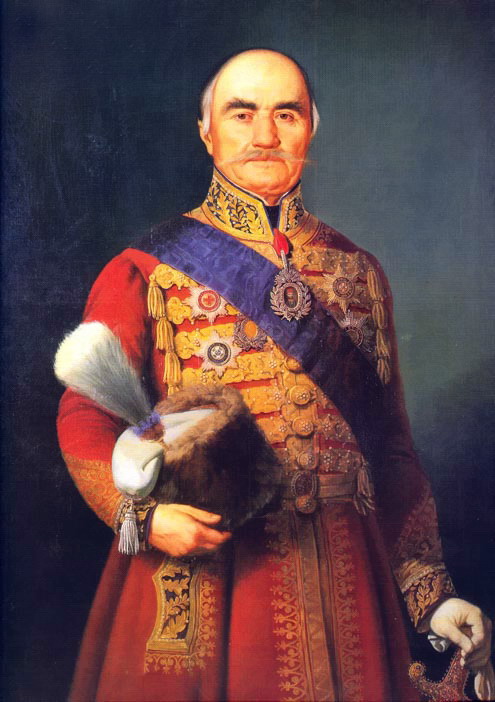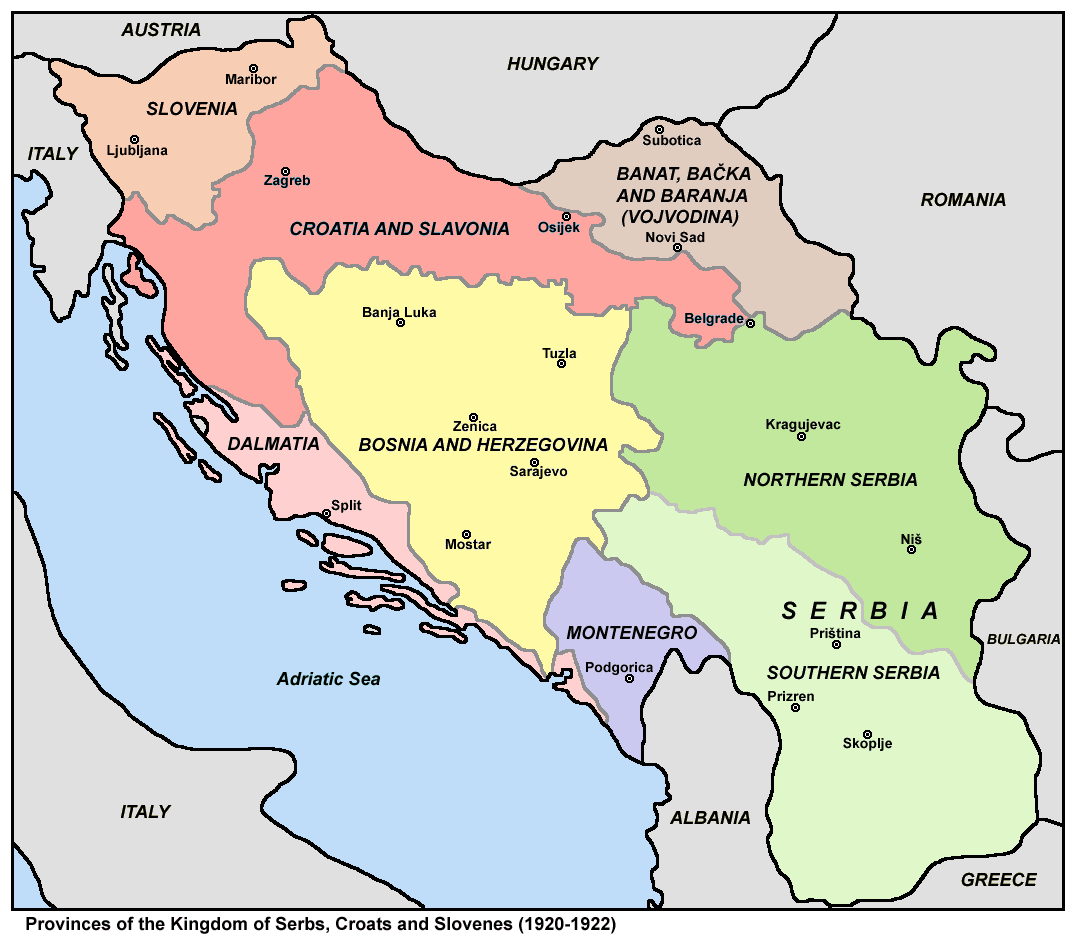|
Srez
The ''srez'' ( sr-cyr, срез; / срезови) was a second-level administrative unit in the Principality of Serbia, Kingdom of Serbia and Yugoslavia. It was a district that included several town- or village municipalities. It was introduced in Serbia in 1834, and abolished in 1963–1367 in SFR Yugoslavia. The unit is no longer used, although the ''katastarski srez'' is used in cadastral classification of property. History The ''srez'' was noted as a second-level administrative unit in the 1903 Constitution of Serbia and the 1921 Constitution of Yugoslavia, below the ''okrug'' and above the ''opština''. See also * Administrative divisions of Serbia * Administrative divisions of Yugoslavia * Uyezd An uezd (also spelled uyezd or uiezd; rus, уе́зд ( pre-1918: уѣздъ), p=ʊˈjest), or povit in a Ukrainian context () was a type of administrative subdivision of the Grand Duchy of Moscow, the Tsardom of Russia, the Russian Empire, the R ..., historical Russian equi ... [...More Info...] [...Related Items...] OR: [Wikipedia] [Google] [Baidu] |
Kingdom Of Serbia
The Kingdom of Serbia was a country located in the Balkans which was created when the ruler of the Principality of Serbia, Milan I of Serbia, Milan I, was proclaimed king in 1882. Since 1817, the Principality was ruled by the Obrenović dynasty (replaced by the Karađorđević dynasty for a short time). The Principality, under the suzerainty of the Ottoman Empire, ''de facto'' achieved full independence when the very last Ottoman troops left Belgrade in 1867. The Treaty of Berlin (1878), Congress of Berlin in 1878 recognized the formal independence of the Principality of Serbia, and in its composition Nišava District, Nišava, Pirot District, Pirot, Toplica District, Toplica and Vranje districts entered the Southern and Eastern Serbia, South part of Serbia. In 1882, Serbia was elevated to the status of a kingdom, maintaining a foreign policy friendly to Austria-Hungary. Between 1912 and 1913, Serbia greatly enlarged its territory through engagement in the First Balkan War, Fi ... [...More Info...] [...Related Items...] OR: [Wikipedia] [Google] [Baidu] |
Principality Of Serbia
The Principality of Serbia () was an autonomous, later sovereign state in the Balkans that came into existence as a result of the Serbian Revolution, which lasted between 1804 and 1817. Its creation was negotiated first through an unwritten agreement between Miloš Obrenović, leader of the Second Serbian Uprising, and Ottoman official Marashli Pasha. It was followed by the series of legal documents published by the Sublime Porte in 1828, 1829 and finally, 1830—the Hatt-i Sharif. Its ''de facto'' independence ensued in 1867, following the evacuation of the remaining Ottoman troops from the Belgrade Fortress and the country; its independence was recognized internationally in 1878 by the Treaty of Berlin. In 1882 the country was elevated to the status of kingdom. Background and establishment The Serbian revolutionary leaders—first Karađorđe and then Miloš Obrenović—succeeded in their goal of liberating Serbia from centuries-long Turkish rule. Turkish authoriti ... [...More Info...] [...Related Items...] OR: [Wikipedia] [Google] [Baidu] |
Yugoslavia
, common_name = Yugoslavia , life_span = 1918–19921941–1945: World War II in Yugoslavia#Axis invasion and dismemberment of Yugoslavia, Axis occupation , p1 = Kingdom of SerbiaSerbia , flag_p1 = State Flag of Serbia (1882-1918).svg , p2 = Kingdom of MontenegroMontenegro , flag_p2 = Flag of the Kingdom of Montenegro.svg , p3 = State of Slovenes, Croats and Serbs , flag_p3 = Flag of the State of Slovenes, Croats and Serbs.svg , p4 = Austria-Hungary , flag_p4 = Flag of Austria-Hungary (1867-1918).svg , p7 = Free State of FiumeFiume , flag_p7 = Flag of the Free State of Fiume.svg , s1 = Croatia , flag_s1 = Flag of Croatia (1990).svg , s2 = Slovenia , flag_s2 = Flag of Slovenia.svg , s3 ... [...More Info...] [...Related Items...] OR: [Wikipedia] [Google] [Baidu] |
SFR Yugoslavia
The Socialist Federal Republic of Yugoslavia (commonly abbreviated as SFRY or SFR Yugoslavia), known from 1945 to 1963 as the Federal People's Republic of Yugoslavia, commonly referred to as Socialist Yugoslavia or simply Yugoslavia, was a country in Central and Southeast Europe. It was established in 1945, following World War II, and lasted until 1992, dissolving amid the onset of the Yugoslav Wars. Spanning an area of in the Balkans, Yugoslavia was bordered by the Adriatic Sea and Italy to the west, Austria and Hungary to the north, Bulgaria and Romania to the east, and Albania and Greece to the south. It was a one-party socialist state and federation governed by the League of Communists of Yugoslavia, and had six constituent republics: Bosnia and Herzegovina, Croatia, Macedonia, Montenegro, Serbia, and Slovenia. Within Serbia was the Yugoslav capital city of Belgrade as well as two autonomous Yugoslav provinces: Kosovo and Vojvodina. The country emerged as Democratic Fede ... [...More Info...] [...Related Items...] OR: [Wikipedia] [Google] [Baidu] |
1903 Constitution Of Serbia
Nineteen or 19 may refer to: * 19 (number) * One of the years 19 BC, AD 19, 1919, 2019 Films * ''19'' (film), a 2001 Japanese film * ''Nineteen'' (1987 film), a 1987 science fiction film * '' 19-Nineteen'', a 2009 South Korean film * '' Diciannove'', a 2024 Italian drama film informally referred to as "Nineteen" in some sources Science * Potassium, an alkali metal * 19 Fortuna, an asteroid Music * 19 (band), a Japanese pop music duo Albums * ''19'' (Adele album), 2008 * ''19'', a 2003 album by Alsou * ''19'', a 2006 album by Evan Yo * ''19'', a 2018 album by MHD * ''19'', one half of the double album ''63/19'' by Kool A.D. * ''Number Nineteen'', a 1971 album by American jazz pianist Mal Waldron * ''XIX'' (EP), a 2019 EP by 1the9 Songs * "19" (song), a 1985 song by British musician Paul Hardcastle * "Stone in Focus", officially "#19", a composition by Aphex Twin * "Nineteen", a song from the 1992 album ''Refugee'' by Bad4Good * "Nineteen", a song from the 2001 ... [...More Info...] [...Related Items...] OR: [Wikipedia] [Google] [Baidu] |
Vidovdan Constitution
The Vidovdan Constitution was the first constitution of the Kingdom of Serbs, Croats and Slovenes. It was approved by the Constitutional Assembly on 28 June 1921 despite the opposition boycotting the vote. The Constitution is named after the feast of St. Vitus (''Vidovdan''), a Serbian Orthodox holiday. The Constitution required a simple majority to pass. Out of 419 representatives, 223 voted for, 35 voted against and 161 abstained. The Constitution was in effect until King Alexander proclaimed his 6 January Dictatorship on that date in 1929. Adoption The process of adopting the Vidovdan Constitution revealed major political conflicts in the new state. Although there were earlier plans to adopt a Constitution (see the Guidelines, the Corfu Declaration, the Geneva Declaration), the Constitution was eventually adopted by a narrow majority and overriding on a national basis. For * Democratic Party * People's Radical Party * Yugoslav Muslim Organization * Alliance of Agrarians ... [...More Info...] [...Related Items...] OR: [Wikipedia] [Google] [Baidu] |
Okrug
An okrug is a type of administrative division in some Slavic-speaking states. The word ''okrug'' is a loanword in English, alternatively translated as area, district, county, or region. Etymologically, ''okrug'' literally means ' circuit', derived from Proto-Slavic , in turn from "around" + "circle". In meaning, the word is similar to the German term ''Bezirk'' or '' Kreis'' ('district') and the French word ''arrondissement''; all of which refer to something "encircled" or "surrounded". Bulgaria In Bulgaria, ''s'' are the abolished primary unit of the administrative division and implied "districts" or "counties". They existed in the postwar Bulgaria between 1946 and 1987 and corresponded approximately to today's oblasts. Kazakhstan In Kazakhstan, an ''okrug'' () refers to an administrative-territorial unit that operates below the district (''raion'') level. The term is most commonly used in the form of rural district (), which encompasses one or several rural settleme ... [...More Info...] [...Related Items...] OR: [Wikipedia] [Google] [Baidu] |
Opština
, , , or (Cyrillic: , or ), is a local government unit in Slavic-speaking countries, most commonly translated as municipality A municipality is usually a single administrative division having municipal corporation, corporate status and powers of self-government or jurisdiction as granted by national and regional laws to which it is subordinate. The term ''municipality' ... in English. It is used by the following countries: References {{DEFAULTSORT:Opstina Types of administrative division ... [...More Info...] [...Related Items...] OR: [Wikipedia] [Google] [Baidu] |
Administrative Divisions Of Serbia
The administrative divisions of Serbia are regulated by the Government decree of 29 January 1992, and by the Law on Territorial Organization adopted by the National Assembly on 29 December 2007.Government of SerbiaDistricts In Serbia/ref>Law on Territorial Organization and Local Self-Government Parliament of Serbia There are two types of administrative divisions in : political (regional and local self-government - ''autonomous provinces'' and ''cities and municipalities'') and administrative (''administrative districts'' for decentralized services of the state and ''statistical regions'' for statistical purposes). Political divisions < ...
|
Administrative Divisions Of Yugoslavia
Yugoslavia had various administrative divisions throughout its 74 years of existence. 1918–1922 From 1918 to 1922, the Kingdom of Serbs, Croats, and Slovenes continued to be subdivided into the pre-World War I divisions (districts, counties and kingdoms) of the Habsburg monarchy and the formerly independent Balkan kingdoms of Serbia and Montenegro. The provinces (''pokrajine'') were: * Slovenia * Croatia and Slavonia * Dalmatia * Bosnia and Herzegovina * Banat, Bačka, Baranja * Serbia ** Northern Serbia ** Southern Serbia * Montenegro 1922–1929 The Vidovdan Constitution of 1921 established the Kingdom of Serbs, Croats, and Slovenes as a unitary state, instituting 33 new administrative ''oblasts'' (provinces) ruled from the center in 1922: * Vrbas Oblast, Banja Luka * Belgrade Oblast, Belgrade * Bihać Oblast, Bihać * Bitola Oblast, Bitola * Zeta Oblast, Cetinje *Oblast of Čačak (Raška Oblast) *Oblast of Ćuprija *Oblast of Dubrovnik *Oblast of Karlovec *Obl ... [...More Info...] [...Related Items...] OR: [Wikipedia] [Google] [Baidu] |
Uyezd
An uezd (also spelled uyezd or uiezd; rus, уе́зд ( pre-1918: уѣздъ), p=ʊˈjest), or povit in a Ukrainian context () was a type of administrative subdivision of the Grand Duchy of Moscow, the Tsardom of Russia, the Russian Empire, the Russian SFSR, and the early Soviet Union, which was in use from the 13th century. For most of Russian history, uezds were a second-level administrative division. By sense, but not by etymology, ''uezd'' approximately corresponds to the English "county". General description Originally describing groups of several volosts, they formed around the most important cities. Uezds were ruled by the appointees (''namestniki'') of a knyaz and, starting from the 17th century, by voyevodas. In 1708, an administrative reform was carried out by Peter the Great, dividing Russia into governorates. The subdivision into uyezds was abolished at that time but was reinstated in 1727, as a result of Catherine I's administrative reform. By the USSR administra ... [...More Info...] [...Related Items...] OR: [Wikipedia] [Google] [Baidu] |



